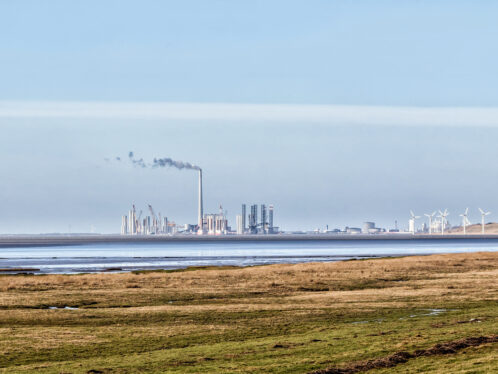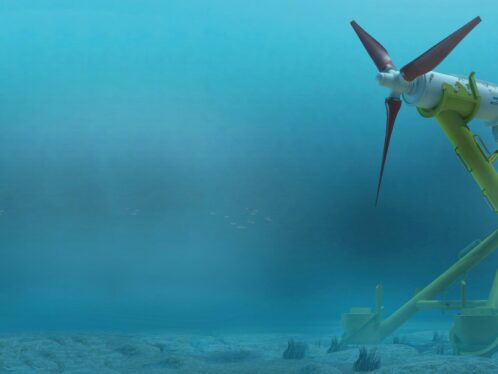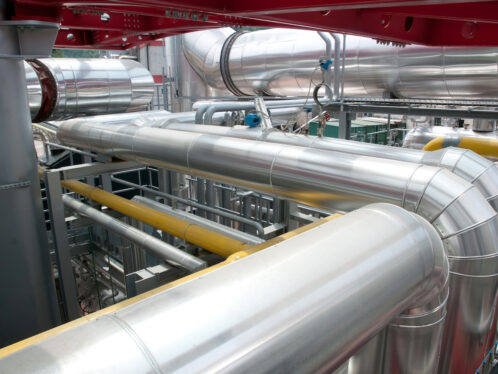
Smooth operator
Operator driven reliability (ODR) has reduced unplanned shutdowns at Stora Enso’s paper mill in Varkaus, Finland. Technology is important, but the main issue is how to organize the work.
When Timo Jurvanen at Stora Enso’s pulp and paper mill in Finnish Varkaus heard about operator driven reliability (ODR), he got interested. As a production superintendent at Paper Machine No. 3 (PM3), he had thought a lot about how sudden failures and unplanned shutdowns could be avoided. At the time, in 2009, pressure on the mill to increase its performance was high, and quick results were important.
“We looked for a tool and a way of working that would include everybody, not just the mainten-ance people,” Jurvanen recalls.
ODR is an approach to mainten-ance and reliability that includes the operators in a way that hasn’t been common before. The principle is to assign maintenance-related tasks to the operators, allowing the actual specialists to spend more time on the analysis and planning of the maintenance. It is essentially a matter of organizing the work in a different way.
“One reason we decided to go for this is that it was easy to implement,” says Jurvanen.
With ODR, operators systematically make predefined routes to collect machine data and make visual inspections of important assets. The groundwork was laid by a steering group, and all five shifts got a two-hour theoretical introduction plus a two-hour walk-through on site. Then it was just a matter of getting started and fine-tuning the process along the way.
“The ODR philosophy fits very well in Stora Enso’s operator maintenance strategy, since operator involvement in the definition and development stages is emphasized in both of them,” says the development manager Mikko Nieminen, who coordinates operator maintenance within the company’s Finnish mills. “It also provides an easy-to-use but advanced tool for data collection and storage that we can introduce to the operators.”
Recently, Evolution visited the mill. It was about an hour before the morning shift was to be relieved, and in the control room operator Pasi Mahrberg prepared for the day’s route. His handheld data collector indicated that six assets were due for inspection, and he took us along on the short walk down the hot and noisy, but very tidy, production line to a room with tanks for the recirculation of process water. Next to one of the tanks was a pump assembly driven by an electric motor, and on the casing were a number of marks. Mahrberg put a wireless machine condition detector on one of the marks, allowing data to be transferred to the handheld recorder via Bluetooth.
“We have always checked on the machine, but we didn’t have tools like this for measuring vibration levels and temperature before,” Mahrberg, a 26-year veteran of the mill, explains. “Now we do it more systematically.”
In about a minute, the pump was inspected, also visually, and log entries were made, so Mahrberg moved to a second pump. The remaining four due for checking would have to wait for another day.
“It’s not fire fighting we’re doing here,” he says. “We’ll take care of them when we have the time. Our priority is always the paper production.”
From this point in the process, Mahrberg will upload the data to an SKF @ptitude Analyst condition monitoring software. Deviations from normal values will be discussed and, if necessary, reported in the mill’s maintenance management software. Then, the maintenance planner can initiate further measurement and analysis or schedule repairs. Reports are filed in the maintenance management software, where they are automatically logged and where the operators can follow the progress. In addition, Timo Jurvanen frequently meets with the people in the shifts to give them detailed feedback on important cases.
ODR has enabled Efora, the mill’s maintenance contractor (a joint venture between Stora Enso and ABB Service), to work in a different way.
“We spend less time on the inspections now and can focus on the most critical assets, says Vesa Nyyssönen,” vibration analyst at Efora. “This means we can make better analyses to find the root cause of problems.”
His tools are more advanced than the handheld data collectors used by the operators, making it possible to dig deeper into a problem. Among other things he uses an SKF @ptitude Analyst database with a massive log of machine data, some of the data ranging back to 1996.
“I can base my analysis on a long history of data,” says Nyyssönen. “Some deviations may be due to changes in the paper process itself and don’t always mean something has to be repaired.”
Each of the 10 ODR inspection routes takes about 15 minutes. This enables the operators to fit them into their schedules without the need for overtime. And the initial investment to get ODR up and running paid for itself in the first month.
“The cost is minimal compared with the benefits,” says Timo Jurvanen. “It’s not an issue.”
About 20 possible critical failures were found in six months, contributing to a reduction of unplanned stops by 0.5 percentage points during the first year. Stora Enso is now implementing ODR in the remaining Varkaus units as well as the company’s other Finnish production sites.
“I hope it will spread to other mills,” says Juha Helkala, maintenance director for Stora Enso in Finland. “Operator maintenance is one of our strategies, and ODR is a good tool for this.”
ODR – how to get there
When Stora Enso implemented operator driven reliability (ODR) at its Varkaus pulp and paper mill, it was in close cooperation with SKF Service Division in Finland. The ambition was to reduce unplanned stops in Paper Machine No. 3 (PM3) and increase productivity.
“We formed a steering group that laid the foundation, and then we launched the ODR programme with a kick-off for everybody,” says ODR specialist Jani Markkanen from SKF, who has been working on the project since it started in 2009. “It is extremely important that you are open about everything and that the goals are well known.”
ODR is essentially a way to make operators more involved in reliability activities by collecting machine data and making visual inspections in a systematic way. The operators monitor trends and report potential problems to the maintenance planner, who prioritizes and plans the actions required. This enables the actual reliability specialists to focus on root cause analysis and efficient maintenance planning.
SKF has been acting as a consultant in the process and provided the main tools. To collect data, operators use SKF MARLIN, a handheld data collector with a wireless machine condition detector. The data are uploaded in an SKF @ptitude Analyst condition monitoring system where they are stored and analyzed. In addition, the maintenance specialists use SKF Microlog for more advanced on-the-spot data collecting and analysis.
All reports and work orders are filed in the mill’s maintenance management software. Altogether, this lays a solid foundation for feedback to the operators, which is another cornerstone of ODR.
“It’s really a quite simple equation: Technology plus a process plus a work culture equals results,” Markkanen says.
And the results are tangible. During the first year with ODR, unplanned stops were reduced by 0.5 percentage points, with tonnes of paper produced instead of hours of unprofitable downtime.




